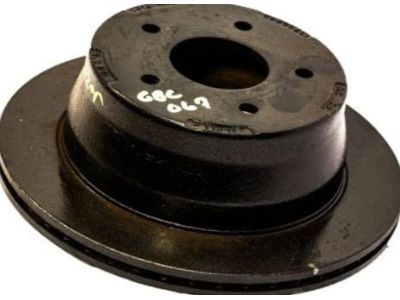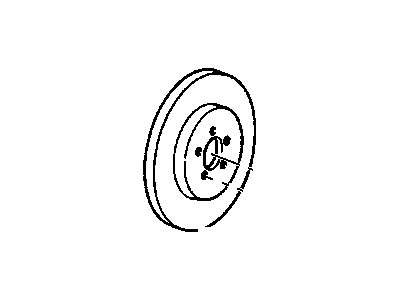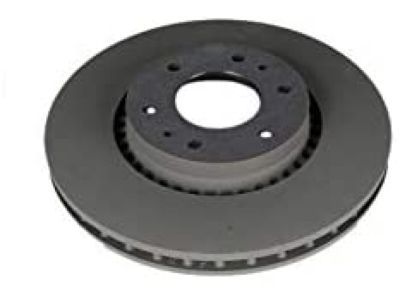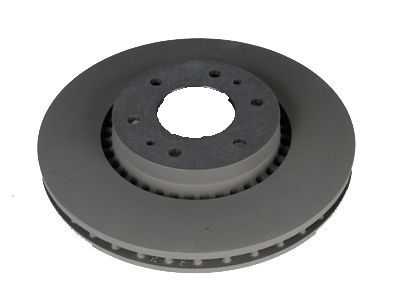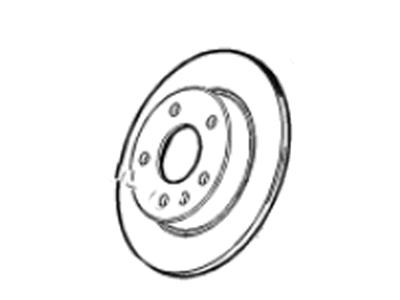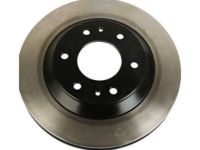
My Garage
My Account
Cart
Genuine Chevrolet Trailblazer Brake Disc
Disc Rotor- Select Vehicle by Model
- Select Vehicle by VIN
Select Vehicle by Model
orMake
Model
Year
Select Vehicle by VIN
For the most accurate results, select vehicle by your VIN (Vehicle Identification Number).
7 Brake Discs found
Chevrolet Trailblazer Front Brake Rotor Assembly
Part Number: 19181002$62.92 MSRP: $173.69You Save: $110.77 (64%)Ships in 1-2 Business DaysChevrolet Trailblazer Front Brake Rotor Assembly
Part Number: 25826103$58.52 MSRP: $161.55You Save: $103.03 (64%)Ships in 1 Business DayChevrolet Trailblazer Front Brake Rotor Assembly
Part Number: 25826102$92.86 MSRP: $168.84You Save: $75.98 (45%)Ships in 1 Business DayChevrolet Trailblazer Rotor, Rear Brk
Part Number: 13507431$51.06 MSRP: $92.85You Save: $41.79 (46%)Ships in 1-3 Business DaysChevrolet Trailblazer Front Brake Rotor (Coated)
Part Number: 13517843$34.79 MSRP: $63.26You Save: $28.47 (45%)
Chevrolet Trailblazer Brake Disc
The Brake Disc is an important component of disc brake system which is fitted for Chevrolet Trailblazer vehicles and is used to surface against which the brake pads are squeezed in order to slow down or stop the car. The rotor is attached to the axle or hub and share its on spinning movement with the wheel, in the case of application of the brakes the hydraulic pressure is used in the calipers to clamp the pads on each side of the rotor. Since the production of Chevrolet Trailblazer models, Brake Discs manufactured have been of different types such as solid and vented. Blade with cooling fins is better than that of solid, common in non sports cars or compact cars. Regular usage of the rotors is important since rotors can develop problems such as warping, scoring or rusting that will impair the stopping power of the vehicle. It is crucial to implement routine maintenance check on the vehicle and replacement of its Brake Disc as often as necessary especially in the Chevrolet Trailblazer.
Each OEM Chevrolet Trailblazer Brake Disc we offer is competitively priced and comes with the assurance of the manufacturer's warranty for the part. Furthermore, we guarantee the speedy delivery of your orders right to your doorstep. Our hassle-free return policy is also in place for your peace of mind.
Chevrolet Trailblazer Brake Disc Parts Questions & Experts Answers
- Q: How to properly replace and install brake discs on Chevrolet Trailblazer?A:Loosen the wheel lug nuts, raise the vehicle, and support it securely on jack stands. Remove the wheel and install the lug nuts to hold the disc in place; if the lug nuts don't contact the disc when screwed on all the way, install washers under them. Remove the brake caliper without disconnecting the brake hose, and suspend it out of the way with a piece of wire, ensuring it doesn't hang by the brake hose. Visually inspect the disc surface for score marks and other damage; light scratches and shallow grooves are normal, but deep scoring requires disc removal and refinishing by an automotive machine shop. Check both sides of the disc, as severe wear indicates the need for replacement. To check disc runout, place a dial indicator about 1/2-inch from the outer edge of the disc, set it to zero, and turn the disc, ensuring the reading does not exceed the specified allowable runout limit; if it does, refinishing is necessary. Resurfacing the discs when replacing Brake Pads is advisable to ensure a smooth finish and eliminate brake pedal pulsation. The disc must not be machined to a thickness under the specified minimum thickness, which is cast into the underside of the front discs and on the outside of rear discs; measure the thickness with a micrometer. Remove the two caliper mounting bracket bolts and detach the mounting bracket. Remove the lug nuts holding the disc in place and slide the disc off the hub, cutting off any pressed-metal retaining clips on the wheel studs if present. Place the disc in position over the threaded studs, install the mounting bracket, and tighten the bolts to the specified torque before installing the brake pads. Install the caliper onto the mounting bracket, tightening the bolts to the specified torque, then install the wheel and lug nuts. Lower the vehicle and tighten the lug nuts to the specified torque, depress the brake pedal a few times to bring the brake pads into contact with the disc, and check the operation of the brakes carefully before driving the vehicle.

